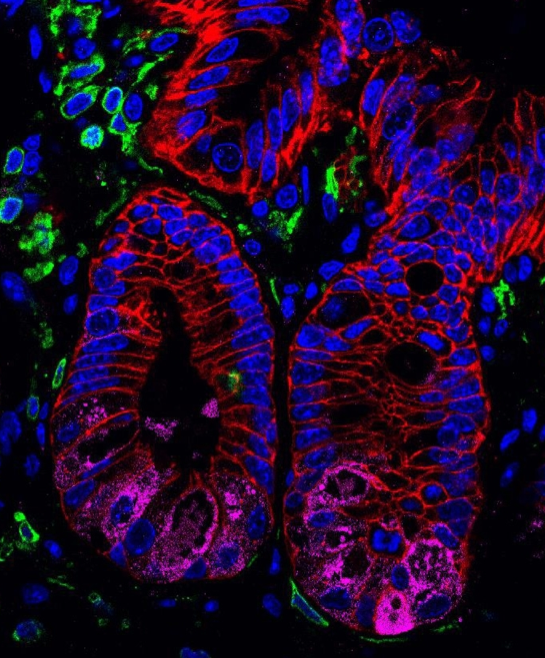Penn Researchers Identify Molecular Link Between Gut Microbes and Intestinal Health
It’s well established that humans maintain a symbiotic relationship with the trillions of beneficial microbes that colonize their bodies. These organisms, collectively called the microbiota, help digest food, maintain the immune system, fend off pathogens, and more. There exists a long and growing list of diseases associated with changes in the composition or diversity of these bacterial populations, including cancer, diabetes, obesity, asthma, and even autism.
Inflammatory bowel disease (IBD) is one of the best-studied diseases associated with alterations in the composition of beneficial bacterial populations. However, the nature of that relationship, and how it is maintained, has yet to be clarified.
Now, researchers at the Perelman School of Medicine at the University of Pennsylvania have identified a molecule that appears to play a starring role in this process.
David Artis PhD, associate professor of Microbiology, and colleagues report in Nature that the enzyme HDAC3 is a key mediator in maintaining proper intestinal integrity and function in the presence of friendly bacteria. What’s more, HDAC3 and the genetic pathways it controls appears critical to maintaining a healthy balance between intestinal microbes and their host.
“HDAC3 in intestinal epithelial cells regulates the relationship between commensal bacteria and mammalian intestine physiology,” says first author Theresa Alenghat VMD PhD, instructor in the Department of Microbiology.
That humans rely on their microbial cohabitants is hardly news. Much normal human physiology is attributable to our relationship to our microbiota.
The question that Alenghat and Artis and their colleagues wanted to answer is, “What are the molecular mechanisms that control this relationship, and how is it that this relationship goes wrong and can contribute to metabolic and inflammatory diseases?”
The team focused their efforts on HDAC3, which belongs to a family of enzymes that can be responsive to environmental signals. And HDAC3 itself, an enzyme that modifies DNA and turns down gene expression, had previously been identified to have various inflammatory and metabolic roles.
Click here to view the full release.








